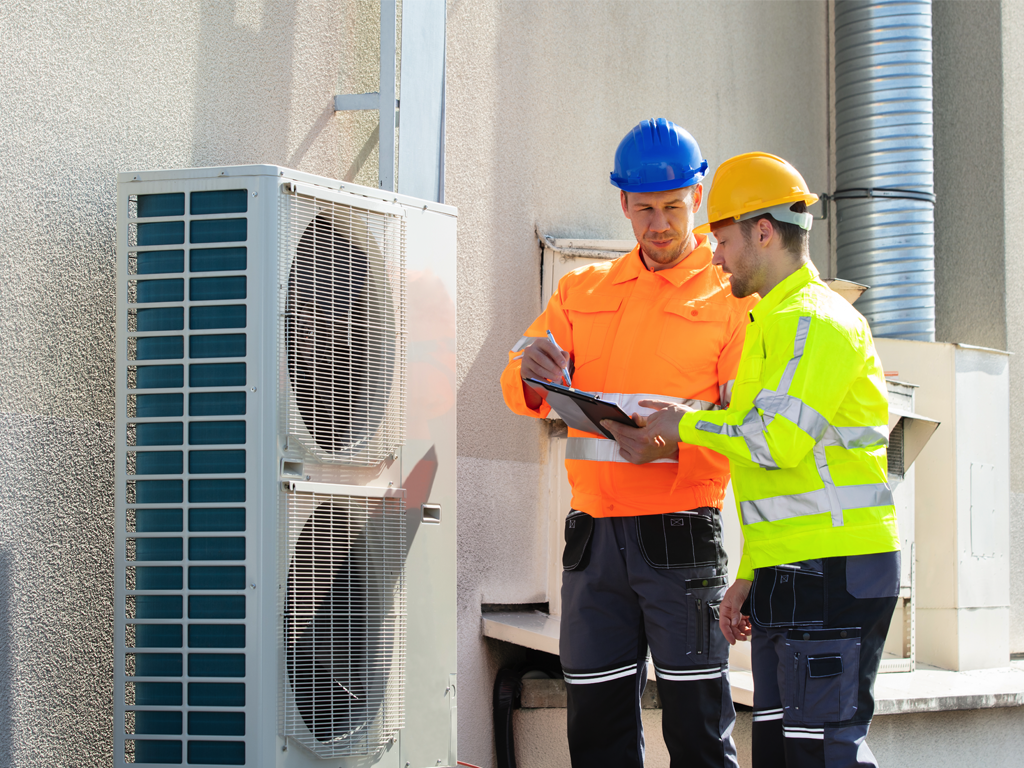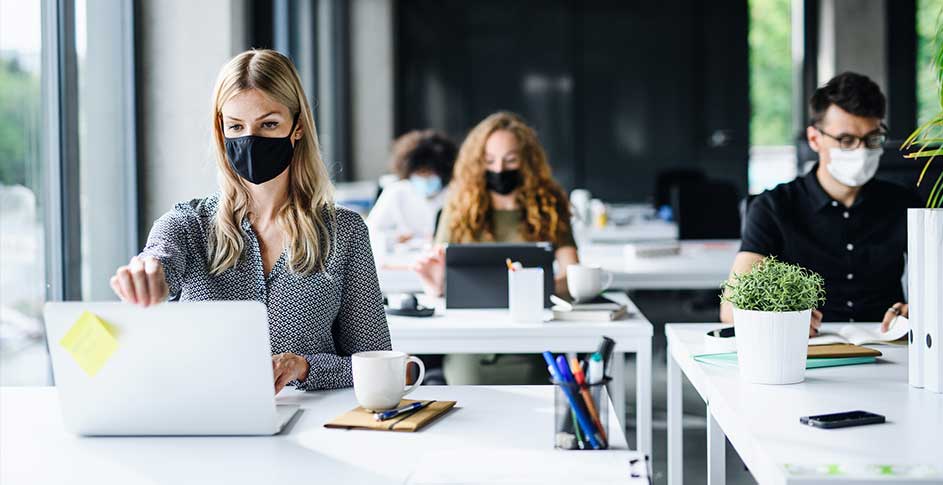Your organization’s HVAC system is expensive. Between charming boutiques and massive office skyscrapers, American commercial properties paid out an average of $7,759 for energy in 2019. According to the state government of New York, heating and cooling account for 37% of this cost. Whether your bill is higher or lower than this average, you’d undoubtedly like to see it go down. However, upgrading to a more efficient system can be both expensive and disruptive.
Here are 5 convenient steps to lower HVAC costs without replacing your existing HVAC system.
1. Audit Your HVAC System
Your first step is to assess your system and energy use as they stand now. You may choose to hire a professional energy auditor to evaluate your commercial indoor air quality and make recommendations.
Alternatively, you can do the assessment yourself. The U.S. Department of Energy publishes a guide to performing your own residential energy assessment, but many of the tips also apply to commercial properties. Have your accountant analyze your energy numbers and your facilities manager visually inspect the facility. The accountant is looking for patterns such as when heating or cooling costs are higher and what you currently spend on maintenance. The facilities manager is looking for areas of concern like uninsulated pipes and ducts, damaged components, clogged filters, and broken thermostats. The goal of this assessment should be to establish a baseline for future improvement.
2. Schedule Regular Maintenance
Regular maintenance is the single easiest way to lower your HVAC costs. While those without in-house personnel may need to call in a service professional, the savings may more than pay for themselves.
According to the state government of Victoria, “When you don’t regularly maintain your heating and cooling system, it can increase your energy consumption up to 30%.” Let’s take this maximum potential inefficiency of 30% as an example. HomeGuide says HVAC tune-ups cost $70 to $200 per call. If you performed a tune-up every quarter, it would cost your business $280 to $800 per year. Compare this with the up to $2,400 a poorly maintained HVAC system could cost you (based on an $8K per year bill). Even if your energy bill is less than half of this, quarterly professional maintenance would likely result in net savings.
3. Seek Out Tax Credits and Grants
We mentioned in our last article that the government has released nearly a half-trillion dollars to fund COVID-related air quality improvements. That funding is use-it-or-lose-it in a limited window, so apply ASAP through your state, tribal, or local government. You can also apply for competitive grants through the EPA’s landing page.
Tax credits are also an option. The U.S. Department of Energy maintains a list of “Tax Incentives for Energy-Efficiency Upgrades in Commercial Buildings.” Additional credits are also likely available through your state government.
Private funding may also be available for small businesses and nonprofits. For instance, the National Grid regularly releases grants to improve local infrastructure, some of which may be used for HVAC improvements.
4. Upgrade Your Energy Efficiency
Not every HVAC upgrade has to be a major project. Many technologies can increase your building’s energy efficiency without a complete overhaul. Below is a non-comprehensive list of such improvements:
- Curtains: Yes, lowering your HVAC costs can be this simple. Shades, blinds, and curtains help block sunlight when you want to keep things cool. Certain types of curtains also help insulate your windows when you want to trap heat indoors.
- Ceiling Fans: Ceiling fans circulate air to improve the overall efficiency of your HVAC system whether you are heating or cooling. The ceiling fans you choose should come equipped with the ability to change directions, creating downdrafts in the summer and updrafts in the winter.
- Smart Thermostats: Why not let computers do the energy efficiency work for you? Smart thermostats learn your temperature preferences, can be controlled from your phone, and can even be programmed to automatically activate the HVAC system when you reach a certain point in your morning commute.
-
Sealant & Insulation:
Obviously, the HVAC system itself should be insulated, but insulating your building’s attic and basement (should it have one) is also important. In addition, make sure your windows and doors are properly fitted, caulked, and weather-stripped.
- A note of caution about sealing your building: sealing improves energy efficiency but can also trap pollutants and gasses inside your building. Increasing the air-tightness of your building must be used in conjunction with other improvements to ensure a proper flow of fresh air.
-
ERVs & Economizers:
We’ve previously discussed these devices in our blog on infrastructure improvements. “Enthalpy recovery ventilators (ERVs)[...]install into an HVAC system and transfer the moisture and temperature of outgoing indoor air to incoming outdoor air, thus preserving much of the heating or cooling your system has already performed.” A simpler alternative can be a Heat Recovery Ventilator (HRV) which transfers heat but not moisture. Economizers, meanwhile “monitor the temperature outside and bring in outdoor air when doing so is most efficient for the heating and cooling system. However, they are not ideal for warm and humid climates.”
- You might also have heard of Demand Control Ventilation (or DCV). DCV is a system that increases or decreases ventilation based on room occupancy, pulling air from unoccupied rooms to evenly distribute carbon dioxide while reducing the amount of air that needs to enter from outdoors. While a well-calibrated DCV system is helpful, poorly calibrated DCV runs the risk of competing with the economizer or increasing carbon dioxide levels.
- Solar Panels: If your energy costs are too high, why not generate your own energy? For businesses with sufficient roof space, this might be a cost-effective option in the long term.
5. Downgrade Your Filters
The EPA’s Clean Air in Buildings Challenge calls for an upgrade to “properly sized MERV-13 air filters or the highest rated MERV filters that the HVAC system can accommodate” (emphasis ours). Many companies rushed to put in MERV-13 filters during the pandemic without pausing to see if such filters were right for their HVAC. According to Bob Villa:
You might think that a higher MERV rating would automatically be better, but it’s not. The higher the MERV rating, the smaller the pores are for the air to flow through an HVAC filter.[...]Reducing the airflow in your system can actually worsen the air quality in your home and put a damaging amount of pressure on the fan of your furnace or AC system.[...]Find out what the highest MERV-rated filter is that still allows for maximum airflow in your system.
The wrong filter grade can also damage other parts of your system such as condenser coils, heat exchangers, and tubing.
How then can you sufficiently reduce viral particles without upgrading your filters to MERV-13? Quite simply, you can supplement your existing filter grade with active air purification. Rather than waiting for particles to pass through a filter or other mechanism, active commercial air purifiers work out in the room itself. For instance, ActivePure Technology distributes reactive molecules throughout the room which pull apart (and thus neutralize) viruses. In fact, devices with ActivePure Technology have been proven to reduce up to 99.99% of many common viruses, bacteria, and mold spores, including the virus which causes COVID-19.
ActivePure comes in both portable units (for instant setup) and induct units that work with your existing HVAC system. The latter can be installed by your in-house personnel in under an hour, and ¡voila!—an HVAC improvement that neither breaks the bank nor the HVAC system.
If you’ve found these 5 steps helpful and want to invest in even greater savings, see our tips for upgrading your BOMA building class.



